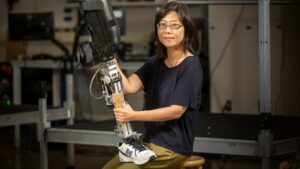
A recent study has raised significant concerns regarding the design of humanoid robots, revealing a critical flaw that could hinder the industry’s future development. Conducted by researchers at Cambridge University, the study highlights that existing humanoid robots often lack the necessary adaptability and precision when interacting with human environments. This discovery prompts industry experts to reconsider whether the current trajectory of humanoid robotics is sustainable.
The research, published in March 2023, outlines how many humanoid robots struggle with basic tasks that require nuanced human-like movements. According to the Institute of Electrical and Electronics Engineers (IEEE), this limitation poses challenges in achieving effective human-robot collaboration, particularly in settings such as healthcare and service industries where interaction is crucial.
While many companies continue to invest heavily in humanoid robotics, the findings suggest that a lack of focus on design improvements could lead to wasted resources. Robotics and Automation Society members have echoed these sentiments, emphasizing the importance of addressing these flaws before further advancements can be made.
The study identifies several key areas requiring immediate attention. One of the most pressing issues is the robots’ inability to adjust to unpredictable movements of humans. The researchers pointed out that the current sensor technology does not adequately support real-time adjustments, which could lead to safety risks in environments where humans and robots coexist.
Moreover, the study indicates that humanoid robots often have difficulty interpreting human emotions or intentions. This shortcoming can hinder their effectiveness in roles that depend on social interaction, such as caregiving or customer service. Dr. Sarah Thompson, a leading researcher on the project, stated, “If we want humanoid robots to be genuinely useful in human environments, we must improve their design to make them more responsive and intuitive.”
Responses from the industry have been mixed. Some companies, particularly those in the United Kingdom and Japan, are already exploring innovative solutions to these challenges. For example, a robotics firm based in Tokyo is developing new algorithms aimed at enhancing robots’ learning capabilities, allowing them to better adapt to human behaviors.
In contrast, other organizations appear to remain focused on aesthetics and functionality rather than addressing these deeper design flaws. This discrepancy raises questions about the future direction of the humanoid robotics market. A recent survey conducted in Toronto found that 67% of industry professionals believe that improving adaptability should be prioritized over developing visually appealing designs.
As the industry grapples with these findings, it remains to be seen how leading companies will respond. The research from Cambridge University serves as a wake-up call, urging stakeholders to rethink their strategies. Failure to address these critical design issues could not only hamper the advancement of humanoid robots but also diminish public trust in their capabilities.
The implications of this research extend beyond academia and into real-world applications. As humanoid robots find their way into various sectors, their effectiveness will largely depend on overcoming these design hurdles. The potential to enhance human-robot interaction can reshape industries, but it requires a concerted effort from innovators, researchers, and policymakers alike.
In conclusion, the findings from the Cambridge study highlight a pivotal moment for the humanoid robotics industry. By confronting these design flaws head-on, the sector can work towards creating robots that not only mimic human appearance but genuinely enhance human experience. As stakeholders contemplate the future, the emphasis must remain on adaptability, responsiveness, and safety to ensure the successful integration of humanoid robots into everyday life.






